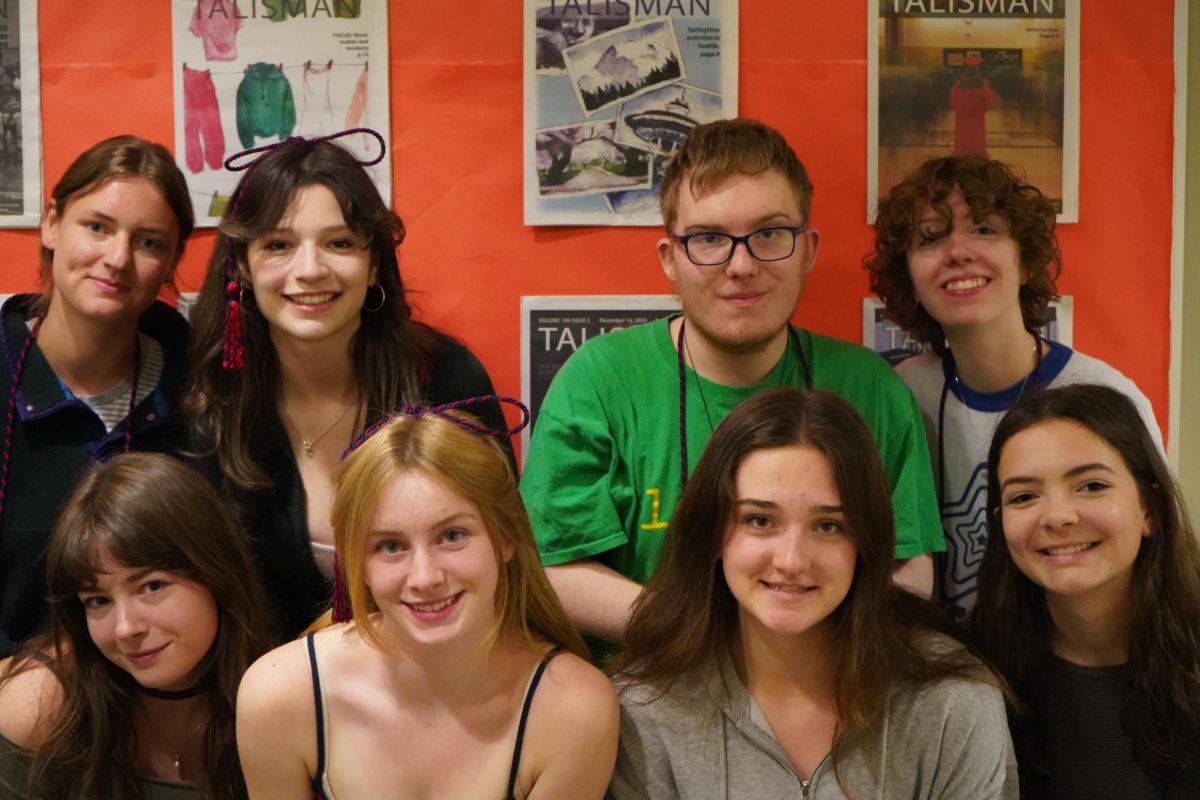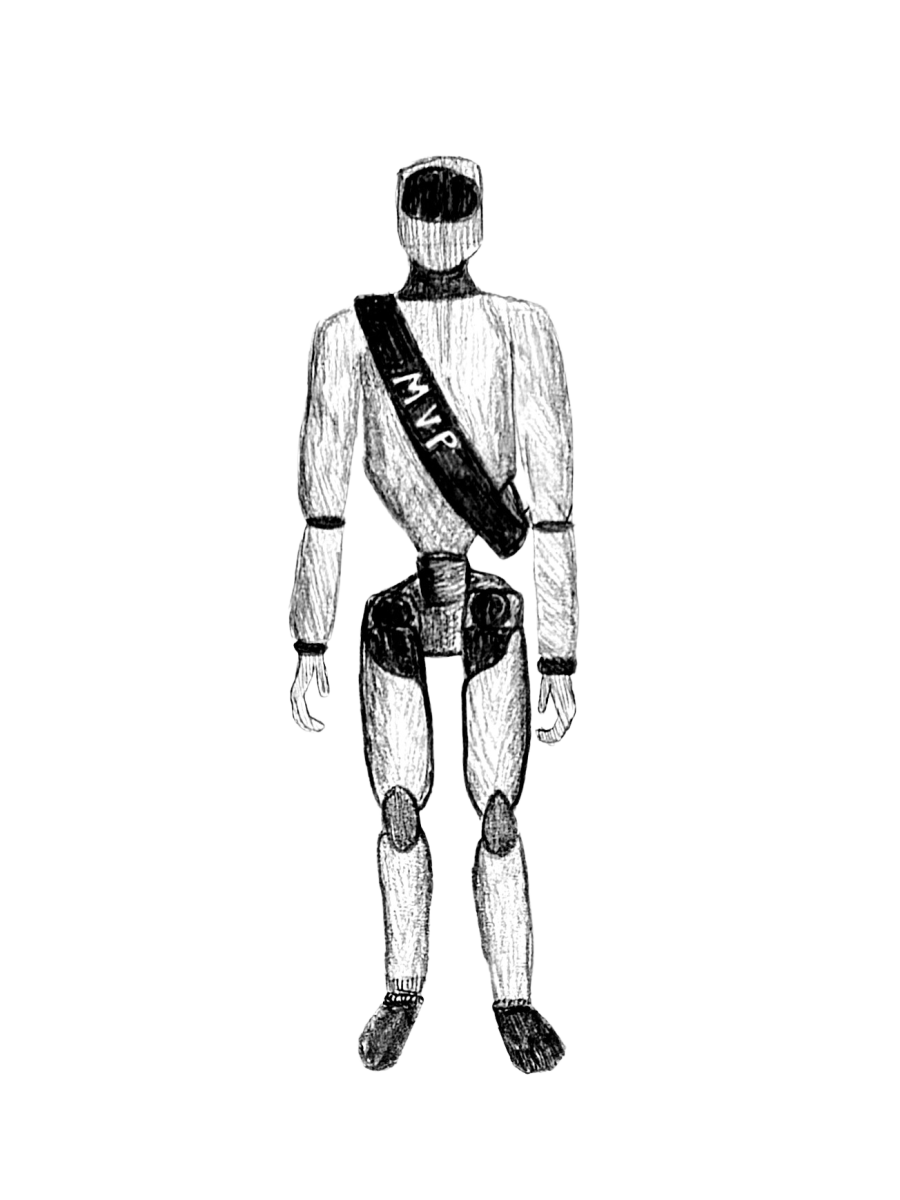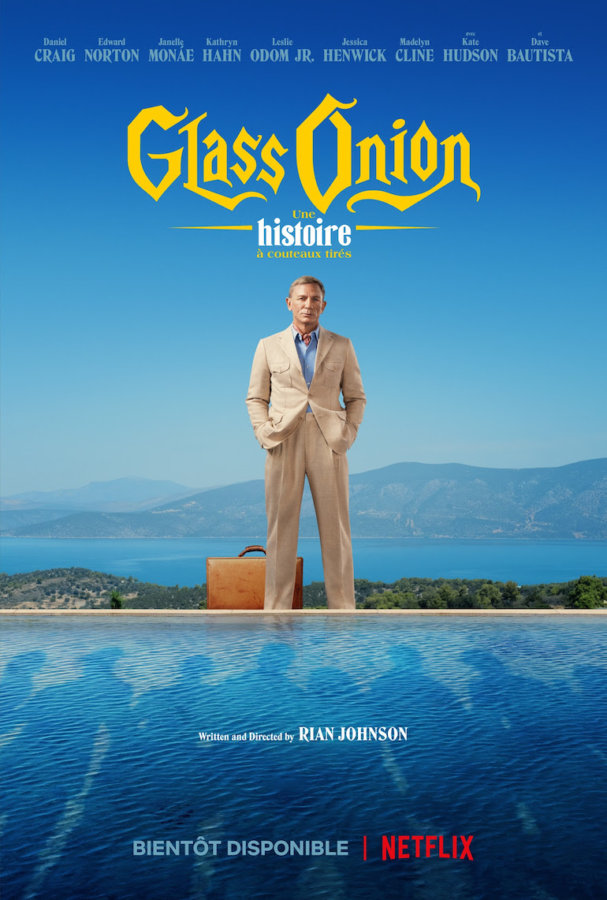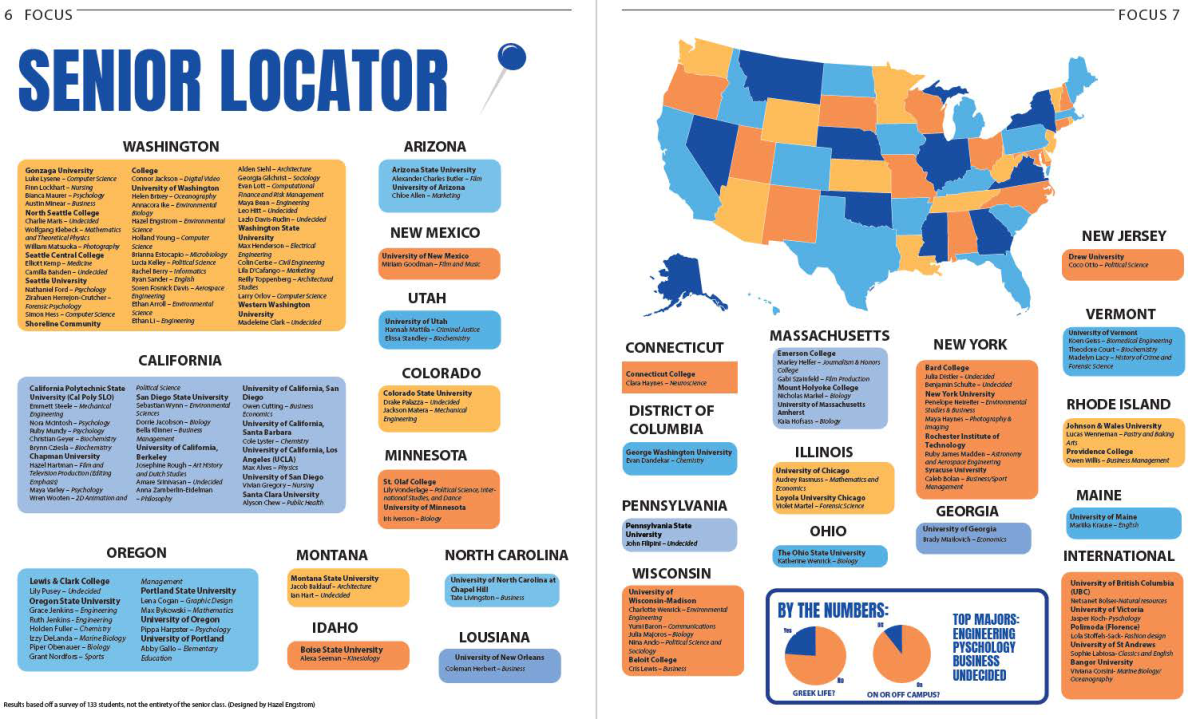A look “through” Rian Johnson’s newest translucent mystery
Glass Onion, a subpar Netflix film
February 6, 2023
“Glass Onion: A Knives Out Mystery,” has no doubt been a recommended blip on your Netflix account over the last several weeks. Directed and written by Rian Johnson, my expectations were mediocre, because I already felt detached from the “Clue homage” style murder mystery trope. Although I went into watching this movie feeling drained and expecting it to have no redeeming qualities I was pleasantly surprised by the powerful and humorous commentary it was able to successfully provide.
The movie opens by showing a sequence of the cast, revealing snippets of their glamorous lives amid a global pandemic, when suddenly interrupted by a surprise delivery. I have a very difficult time with the setting of movies incorporating relevant pop culture ideals or being set in 2020. Especially because they tend to feature fads that will be irrelevant by the time the movie is streaming.
When we are first introduced to our withdrawn, Southern detective, Benoit Blanc, played by Daniel Craig, he is seen playing virtual Clue, (with Natasha Lyone and Angela Lansbury) but finds himself distracted with a game of “Among Us”. While the inclusion of this widely mocked virtual game certainly turned me off, I shortly forgot about this insignificant detail as I observed our five main characters solve a puzzle box, revealing an invitation from their longtime friend and tech guru, Miles Bron, portrayed by Edward Norton.
The five are soon reunited on a dock, awaiting the arrival of Miles’ private boat that will deliver them to his gaudy and entirely over the top private island. This scene was able to achieve comical social commentary on different types of mask wearers. As we see each character or “party” show up, we are exposed to a little part of them and their beliefs, simply by observing their mask wearing habits. Birdie Jay, played by Kate Hudson, arrives wearing a mask entirely made of white mesh and later says, “Thank god we can finally breathe without those stupid masks on.”
As the group arrives and settles into their customized villas, you are exposed to more of the inner workings of their broken and corrupt dynamic and how Miles holds a larger monopoly than earlier presumed. This helped develop the plot and push the mystery further in the right direction. As we see the way our two antagonistic female leads have juxtaposing wardrobes, the idea that each character brings a different set of skills to the team that Miles has subconsciously built for his own exploitations, becomes clear. This was another moment of subtle humor that the movie successfully peddled and added to the layers of personality that we expected and originally saw amongst our main characters in Knives out.
The 2 hour and 20 minute movie is divided by a layering tactic, meaning that we get to see repeats of the same scenes from the perspective of our largely resented female protagonist, Andi, played by Jenelle Monae. The second half contained some fun tricks but overall gave up critical information too easily and made it easier to understand what murderous events were to follow.
Although the movie had an ultimately unrewarding ending, it found a way to have an idiotic amount of action with little to no consequences. While the story felt unresolved, it concluded with final commentary. Our over the top detective helps us recall several scenarios that occurred on the island, to simply point out the amount of credit our “Tech Genius” receives. In reality he is of very little value and planted himself in a group of intellectuals that could manage to facilitate his vendetta. I feel that the general idea of an unattractive, egotistically bloated, billionaire with a highly risky idea is not unfamiliar at all. Americans are used to seeing this manipulation of women, power, and spokespeople with the end goal of jeopardizing everyone, so this depiction was funny but sort of overdone.
The Movie actually does have several references to its predecessor, Knives out. This was purposeful on Johnson’s part, and he has disclosed that every referenced detail is simply a plot element in reverse. This is shown through the revered invitation, the plot twist exactly halfway through the movie, and by flipping the killer’s narrative.
The metaphor of the “Glass Onion”, describing the mystery as a whole, felt too broad. The concept that the onion represented looking deeply into something because it has many layers but in actuality the center is visible, was reaching slightly beyond the overall message of vengeance and exposure.
By the final scene I felt as though the movie did what it was meant to do. It was engaging and cast incredibly well. It explored ideas that are irrevocably relevant but not groundbreaking. The mystery was far less complicated than I had expected, however I was enthralled in the story because of the constant eye candy of each and every stylized detail.




















